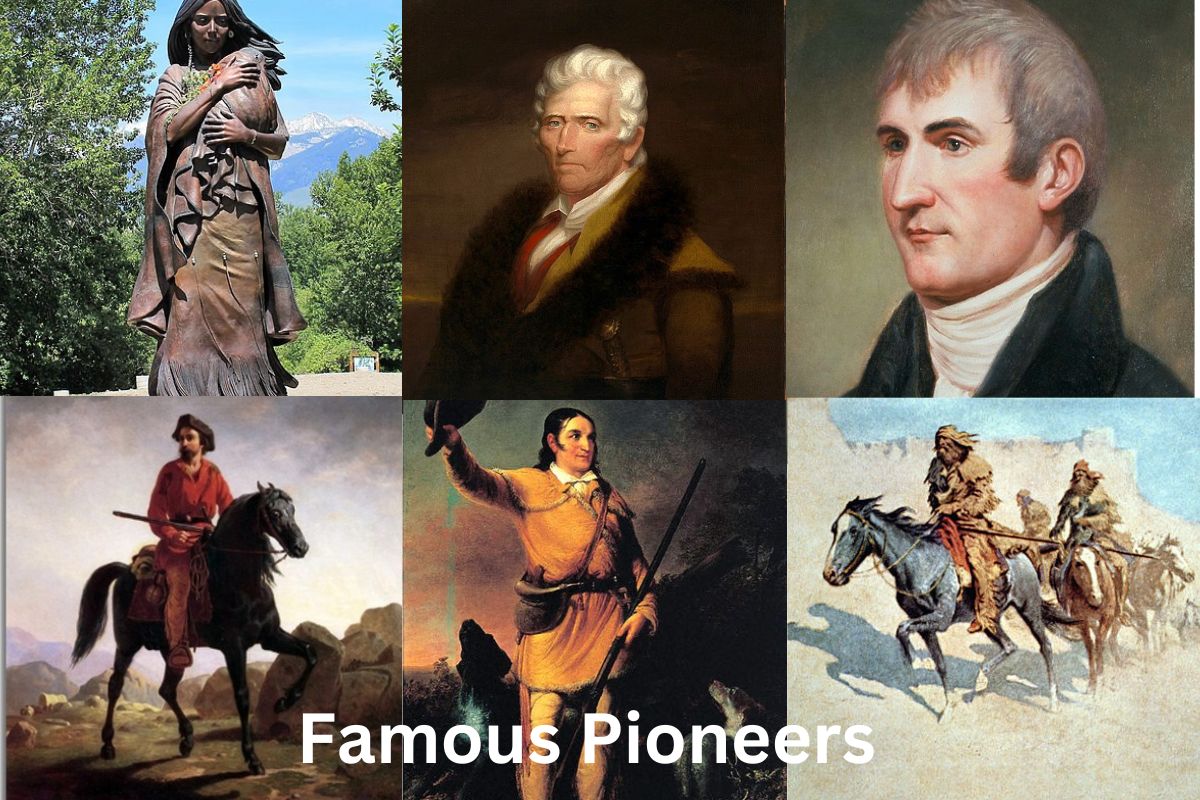The Pioneers of the American West were individuals who journeyed into the unknown, often confronted with enormous challenges and sufferings in their drive to explore, settle, and expand the United States.
These explorers, frontiersmen, Native Americans, soldiers, and politicians came from a diverse range of backgrounds.
The American West has long been associated with tough individuality, exploration, and adventure. It was a huge, untamed wilderness filled with Native American tribes and herds of bison, elk, and other wildlife.
The pioneers who journeyed into this country confronted a variety of difficulties, including harsh weather, deadly fauna, and hostile Native American tribes.
Notwithstanding these challenges, they persisted in exploring the country, building towns, and establishing trade and commerce in the region.
The legacy of the American West’s pioneers may still be felt today, with many towns, cities, and landmarks retaining their names.
Their bravery, determination, and pioneering spirit continue to inspire people all around the world, and their contributions to American history and culture are still cherished and remembered.
Famous Pioneers
1. Daniel Boone

Daniel Boone was an American pioneer, frontiersman, explorer, and folk hero who lived from 1734 to 1820. He was born in Pennsylvania, but he spent the majority of his life exploring and colonizing the American West, which included the Appalachian Mountains, Kentucky, and Missouri.
Also Read: Famous Explorers of America
Boone is most renowned for his role in Kentucky exploration and settling. In 1775, he and a group of other pioneers established Boonesborough, which grew to become a significant center of trade and business in the region.
Also Read: Facts About Daniel Boone
Boone was an accomplished hunter and woodsman who could easily navigate the forest. He was also a skilled at fortifications, which he used to protect his fellow settlers from Native American attacks.
In his day, Boone’s exploits and escapades were legendary, and he became a prominent figure in American folklore and history. He is remembered today as a symbol of the American West and the pioneering spirit that helped define the country.
2. Davy Crockett

Davy Crockett (1786-1836) was a frontiersman, soldier, and politician who became a folk hero during his lifetime and a symbol of American frontier virtues after his death. He was born in Tennessee and spent much of his life in the United States’ western frontier.
Also Read: Davy Crockett Facts
Crockett was a talented hunter and marksman who rose to fame as a bear hunter and frontiersman. In 1827, he was elected to the United States Congress and served in both the House of Representatives and the Senate.
Crockett was well-known for his wit and sense of humor, as well as his sympathy for the common man and opposition to government corruption.
Also Read: American History in the 1800s
Crockett resigned from Congress in 1835 and relocated to Texas, where he died in the Battle of the Alamo in 1836. His life and legacy continue to inspire people today. He became a legendary figure in American folklore and history.
3. Sacagawea

Sacagawea (about 1788-1812) was a Lemhi Shoshone woman who served as a guide and interpreter on the Lewis and Clark Expedition.
She was employed by the explorers Meriwether Lewis and William Clark in 1804, when she was just a teenager, to help them navigate the newly acquired Louisiana Territory and communicate with the Native American tribes they encountered.
Sacagawea was critical to the expedition’s success, using her knowledge of the country and language skills to assist the explorers in finding food, water, and safe passage.
She also acted as an intermediary between the explorers and the Native American tribes they visited, assisting in the establishment of peaceful relationships and the securement of important supplies.
Sacagawea’s contributions to the Lewis and Clark Expedition were critical, and she is regarded today as a symbol of Native Americans’ essential role in the exploration and settlement of the American West. She is also seen on the United States dollar coin.
4. Jedediah Smith

Jedediah Smith (1799-1831) was an American explorer and trapper who was instrumental in the development of the American West. In his late teens, he became a fur trapper, traveling to the Rocky Mountains, the Great Plains, and the Pacific Northwest to trade for beaver pelts.
Smith was well-known for his boldness, ingenuity, and willingness to take risks. He was the first American to cross the Sierra Nevada Mountains and the Mojave Desert, and he discovered the South Pass over the Rocky Mountains, which became a popular route for westward migration.
Also Read: Famous Mountain Men
Smith was slain by Comanche Indians during an expedition to explore the Southwest in 1831.
Despite his brief life, he made substantial contributions to the opening up of the American West, mapping previously unexplored country and uncovering routes that became critical to the United States’ expansion. He is renowned today as one of America’s greatest explorers and pioneers.
5. John C. Fremont
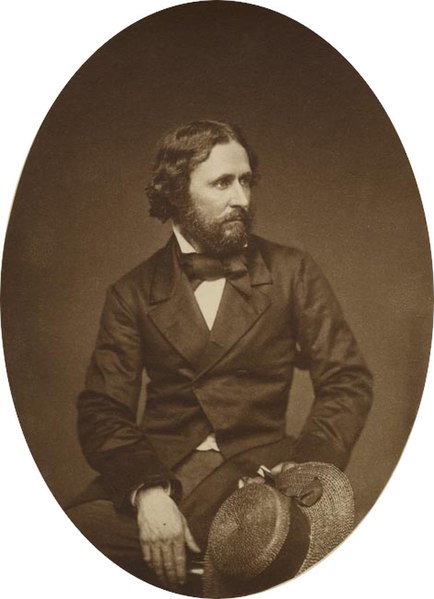
John C. Frémont (1813-1890) was an American explorer, soldier, and politician who was instrumental in exploring and settling the American West.
He was born in Georgia and began his career as an army officer, participating in a number of missions to explore the United States’ western frontiers.
Frémont is most known for leading multiple excursions, including one that surveyed a transcontinental railroad route and another that investigated the Great Basin and the Sierra Nevada Mountains.
His maps and reports from these voyages were essential in allowing colonization and development in the West.
Frémont was also interested in politics, campaigning unsuccessfully for president on the Republican ticket in 1856. He was also a senator and the governor of the Arizona Territory.
Frémont was and still is a divisive figure in his own day. He was noted for his strong nature and disputes with both his military superiors and political opponents.
His contributions to the discovery and settlement of the American West, however, were considerable, and he is remembered as a pivotal figure in the region’s history.
6. Brigham Young

Brigham Young (1801-1877) was an American religious leader and statesman who was instrumental in settling the American West. He was born in Vermont and grew up as a member of the Mormon Church.
Young soon advanced in the church’s ranks, becoming a member of the Quorum of the Twelve Apostles in 1835 and president in 1847.
Young is best remembered for guiding the Mormons west to settle in Utah Territory, where he helped to create Salt Lake City and other villages around the region. He was well-known for his ability as an organizer and administrator, as well as for his charisma and leadership.
Young was involved in politics as well as religious leadership, serving as the first governor of the Utah Territory and as a member of the territory assembly.
He was a divisive figure in his day and continues to be so now, thanks in part to his support for polygamy and disputes with the federal government over topics like as statehood and the separation of church and state.
Despite the controversy surrounding his reputation, Young made substantial contributions to the settlement of the American West, and he is acknowledged as a pivotal figure in the region’s history. The Mormon Church he founded is still a powerful force in the West and around the world.
7. Kit Carson

Kit Carson (1809-1868) was an American frontiersman, explorer, and Indian agent who helped to open up the American West. He was born in Kentucky and lived much of his life in the United States’ western regions.
Carson was well-known for his abilities as a trapper and scout, and he rose to prominence as a guide on John C. Fremont’s missions in the West.
He was also involved in a number of skirmishes with Native American tribes, including the Navajo and Apache, and he was instrumental in the United States’ subjugation of these nations.
Carson worked as an Indian agent as well as a frontiersman, negotiating treaties between the United States government and Native American tribes. He was known for his compassion for the tribes’ suffering, and he sought to ameliorate their living conditions and preserve their way of life.
Carson’s legacy is complicated because he was involved in the forced removal and suppression of Native American nations.
He is recognized, however, as a skillful frontiersman and a pivotal character in the history of the American West. His life and impact are still the subject of debate and discussion today.
8. Annie Oakley
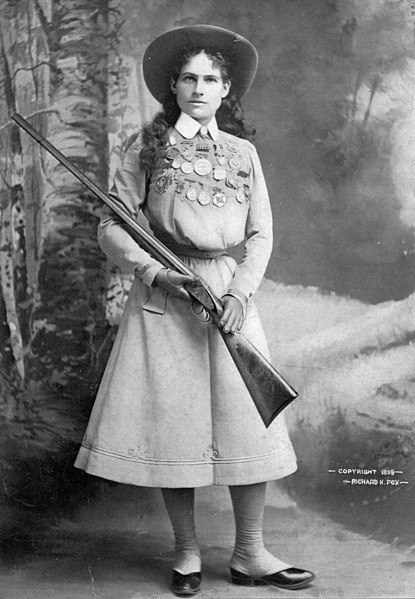
Annie Oakley (1860-1926) was a performer and sharpshooter who became a symbol of the American West in the late nineteenth and early twentieth century.
She was born in Ohio and began shooting at an early age, relying on her abilities to support her family after her father died.
Oakley rose to prominence as a markswoman, winning various shooting competitions and appearing in performances such as Buffalo Bill’s Wild West. She was noted for her accuracy and precision, shooting small and distant targets and performing a variety of trick shots and acrobatics.
Also Read: Annie Oakley Facts
People all over the world admired Oakley’s shooting abilities, and she utilized her celebrity to campaign for women’s rights and other social problems. She supported the suffrage cause and used her performances to show that women could be just as capable and skilled as men.
Oakley’s legacy as a performer and an icon of the American West is still being honored today. She is renowned as a woman’s rights pioneer as well as one of the best marksmen and performers of all time.
9. Buffalo Bill Cody
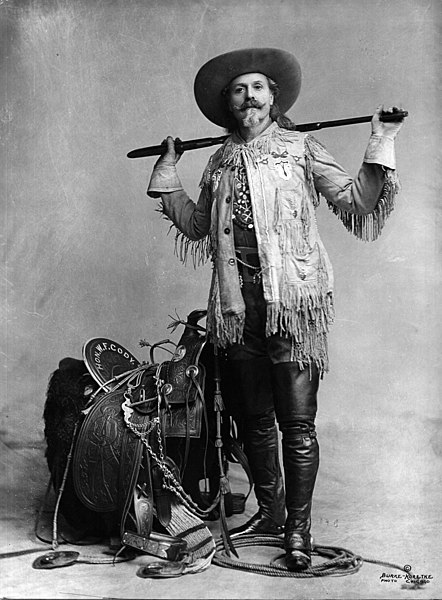
William “Buffalo Bill” Cody (1846-1917) was an American frontiersman, soldier, and showman who helped to open up the American West. He was born in Iowa and spent much of his childhood working for the US Army as a trapper, buffalo hunter, and scout.
Cody rose to fame as a buffalo hunter, earning the moniker “Buffalo Bill” for his skill and bravery on the frontier. He was also a soldier, engaged in a series of confrontations with Native American tribes in the West while serving in the Union Army during the Civil War.
Cody then became a showman, developing and starring in Buffalo Bill’s Wild West, which toured the United States and Europe. Reenactments of buffalo hunts and fights with Native American tribes were included in the spectacle, as were performances by other notable individuals from the American West, such as Annie Oakley.
Cody’s Wild West show was a popular attraction at the time, and it served to popularize the notion of the American West as a country of opportunity and adventure.
Despite controversy regarding his treatment of Native Americans and the veracity of some of his acts, Cody’s legacy as a symbol of the American West lives on, and he is acknowledged as one of the era’s most iconic individuals.
10. Calamity Jane
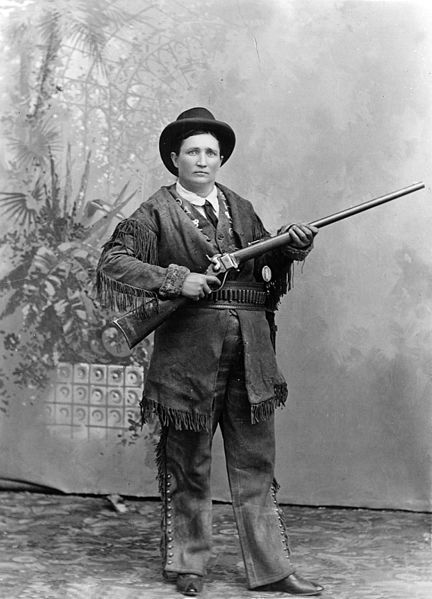
Calamity Jane (1852–1903) was a famous American frontierswoman and entertainer known for her marksmanship and friendship with Wild Bill Hickok.
She was born Martha Canary in Missouri and lived much of her life on the country’s western frontier.
Jane was well-known for her abilities as a sniper and horsewoman, and she worked as a scout, performer, and even a prostitute at various times throughout her life. Her involvement with Wild Bill Hickok, a famed gunfighter and lawman of the American West, made her famous.
Jane was recognized for her love and charity to others, despite her frequently gruff exterior and reputation as a tough, independent lady.
During a smallpox epidemic in Deadwood, South Dakota, she is claimed to have tended the sick and adopted and nurtured an orphaned girl.
Jane’s life and legacy continue to captivate and divide people, as much of her history is based on legend rather than fact.
Her status as a symbol of the American West and a pioneer for women’s rights, however, endures, and she is remembered as one of the era’s most famous individuals.
11. William Clark

William Clark (1770-1838) was an American explorer, soldier, and politician best remembered for his role as co-leader of the Lewis and Clark Expedition in the early 1800s, which explored and documented the newly acquired Louisiana Territory.
Clark was born in Virginia and joined the army at an early age, fighting against Native American tribes in the Northwest Territories.
In 1803, Clark was asked to co-lead an expedition to investigate the Missouri River and locate a path to the Pacific Ocean by his friend Meriwether Lewis.
Also Read: Accomplishments of Lewis and Clark
The voyage, which lasted from 1804 to 1806, was a huge success, paving the way for settlement and commerce in the West and proving the United States’ claim to the land.
Clark went on to become the Missouri Territory’s superintendent of Indian affairs and, subsequently, the Missouri Territory’s governor. He was also involved in a number of military campaigns in the West against Native American tribes.
Clark’s impact as an explorer and leader in the American West is considerable, and he is seen as a pivotal player in the region’s opening up to colonization and expansion.
His Lewis and Clark Expedition writings are still studied and revered today for their insights into the geology, ecology, and cultures of the time.
12. Meriwether Lewis
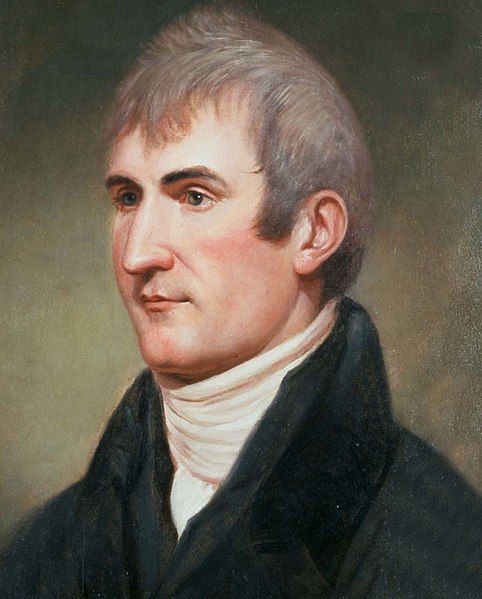
Meriwether Lewis (1774-1809) was an American explorer, soldier, and politician best remembered for leading the Lewis and Clark Expedition, which explored and charted the newly acquired Louisiana Territory in the early 1800s.
Lewis was born in Virginia and joined the army at an early age, fighting against Native American tribes in the Northwest Territories.
President Thomas Jefferson appointed Lewis to head an expedition to investigate the Missouri River and locate a path to the Pacific Ocean in 1803.
He enlisted the help of his friend William Clark to co-lead the expedition, which was a huge success, opening up the West to population and commerce and proving the United States’ claim to the land.
Following the voyage, Lewis became governor of the Louisiana Territory, and then of the Missouri Territory. Nonetheless, he struggled with personal and financial problems in his final years and died in 1809 under strange circumstances.
Lewis’s legacy as an explorer and leader in the American West is significant, and he is remembered as a key figure in the opening up of the region to settlement and expansion.
13. Wyatt Earp
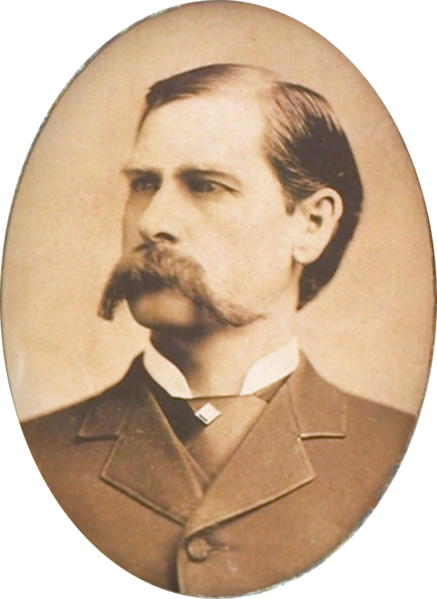
Wyatt Earp (1848-1929) was an American lawman and gunfighter who made a significant contribution to the history of the American West. Before becoming a cop, he worked as a buffalo hunter and a teamster in Illinois.
Earp is well known for his role in the iconic shootout at the O.K. Corral in Tombstone, Arizona, in 1881, in which he and a gang of outlaws faced off against him and a group of lawmen.
The gunfight became famous as a symbol of the American West’s lawlessness and brutality, and Earp became a legend for his daring and ability as a gunslinger.
Earp worked as a miner, a gambler, and a saloon owner in addition to being a lawman and a gunfighter. He was embroiled in a lot of conflicts and controversies, and his status as both a hero and a villain is still questioned today.
Earp’s legacy as a symbol of the American West lives on, and he is remembered as one of the era’s most iconic individuals. His life and exploits have inspired several novels, films, and television productions, and his mystique continues to captivate people all over the world.
14. Jesse James
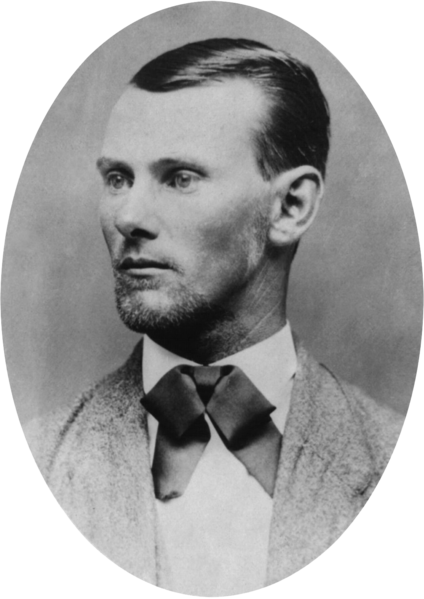
Jesse James (1847-1882) was an American criminal and gang leader most known for his bank, stagecoach, and railroad robberies in the American West.
Born in Missouri, he joined the Confederate guerilla force during the Civil War, where he earned a reputation as a skillful and vicious fighter.
Following the war, James and his brother Frank created a gang that robbed banks and other targets throughout the Midwest, becoming well-known for their daring heists and ability to elude police enforcement.
Some saw them as folk heroes, and their exploits were chronicled in newspapers and dime novels of the time.
James’ life was cut short in 1882 when he was shot and killed by a member of his own gang. His legacy as an outlaw and emblem of the American West, on the other hand, lives on, and he is recognized as one of the era’s most infamous people.
Despite his illicit exploits, James has received favorable portrayals in popular culture, and his mystique continues to fascinate people worldwide.
15. Butch Cassidy
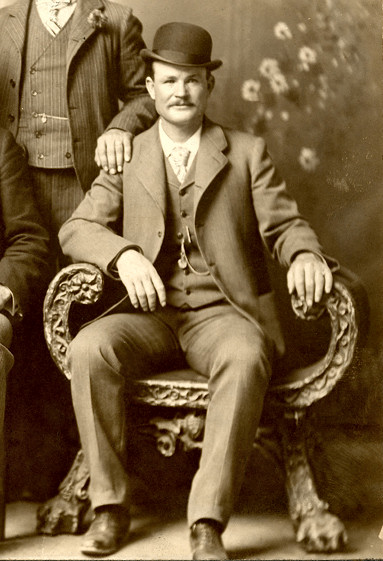
Butch Cassidy (1866-1908) was an American bandit and the head of the Wild Bunch gang, who committed a number of bank and railway robberies in the American West in the late nineteenth and early twentieth century.
He was born in Utah and got his start in the criminal world as a cattle rustler.
Cassidy rose to prominence as a result of his daring heists and ability to elude law enforcement, as well as his charm and charisma, which helped him become a popular figure among his fellow outlaws and the general public.
He became well-known for his Union Pacific Overland Flyer and other train robberies, as well as his escape from the Wyoming state penitentiary in 1901.
Cassidy and his sidekick, the Sundance Kid, fled to South America in 1901, where they continued their nefarious operations for several years. They were slain in a shootout with Bolivian police in 1908, and their deaths became legendary.
Cassidy’s legacy as an outlaw and emblem of the American West lives on, and he is remembered as one of the era’s most notorious personalities.
Despite his criminal acts, Cassidy has received sympathetic portrayals in popular culture, and his mystique continues to captivate people worldwide.
